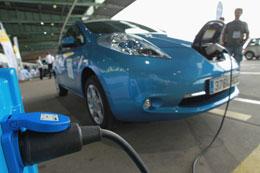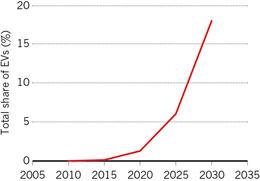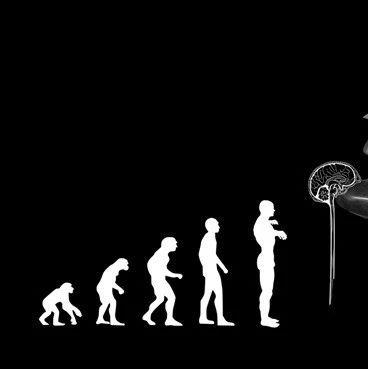别担心电动车的最大行驶里程 - 我们中的很多车主许多根本不会开那么远。
Stop worrying about the range of electric vehicles — many of us simply don't drive that far.
Switch on the air conditioning in a modern electric vehicle and, as the battery level plummets, you will get a good idea of what 'range anxiety' is about. But an analysis of actual distances travelled by motorists suggests that people needn't be so worried — the number of drivers that will typically never exceed the range of an electric vehicle (EV) is much greater than the number of EVs that manufacturers will be able to produce for many years to come.

He probably only uses it to nip down to the corner store.
According to Nathaniel Pearre at the Center for Carbon-free Power Integration of the University of Delaware in Newark and his colleagues, the study not only suggests that EVs can already meet the needs of almost one in ten drivers, but also that they could do so without the deployment of public charging points. Instead, for a large number of motorists, a single overnight home charge would be sufficient for all their driving needs.
The analysis was based on data acquired from devices installed in 484 randomly selected petrol vehicles in and around Atlanta, Georgia, the state ranked seventh in the United States in terms of annual vehicle-miles travelled per person. On the basis of more than 50 days sampling for 470 of those vehicles, Pearre et al. found that 9% of drivers never travelled more than 160 kilometres per day in the course of a typical year, and 21% never travelled more than 240 km.
What's more, provided drivers are willing to make some form of adaptation up to six times a year — such as using a second household vehicle, renting a liquid-fuel vehicle, curtailing a journey or stopping to recharge en route — EVs could meet the needs of one-third of all US drivers.

The consultancy CE Delft predicts that electric vehicles will become much more common after 2020.
Market range
The ranges of electric cars currently on the market — such as the Nissan Leaf and Mitsubishi's iMiEV — are less than 120 km, but to use those ranges as a benchmark would be a mistake, says Pearre. "Those and all current EVs were designed in an age of very expensive batteries." Others are coming to market, such as BMW's Mini-e, that have ranges beyond 160 km.
Improving the capabilities of batteries will be crucial, says Yi Cui, a materials scientist at Stanford University in California who has been developing ways to improve battery performance. "Increasing the battery energy density is very important to extend the range and also to reduce the battery cost," he says. New electrode materials such as silicon anodes, composite layer oxide cathodes and sulphur cathodes could potentially increase the energy content of batteries by up to four times in the next three to five, he says.
Don Hillebrand, director of transportation research at the Argonne National Laboratory in Illinois, expects to see a 50% increase in battery energy density in the next two or three years, thanks to developments in lithium-ion-battery chemistry. "I personally think that lithium air batteries have the highest potential and, at least theoretically, they have the potential to increase electric vehicle range by a factor of 10," he says. That would yield ranges well in excess of 800 km, bringing them in line with those of liquid-fuel vehicles.
But range isn't the only obstacle facing EVs. "I don't think that the limit to electric vehicles right now is purely finding a few people who can use them," says Hillebrand. Another problem is that EVs don't meet all transportation needs. "The challenge," Hillebrand adds, "Is figuring out how to fill the gap when they don't."







